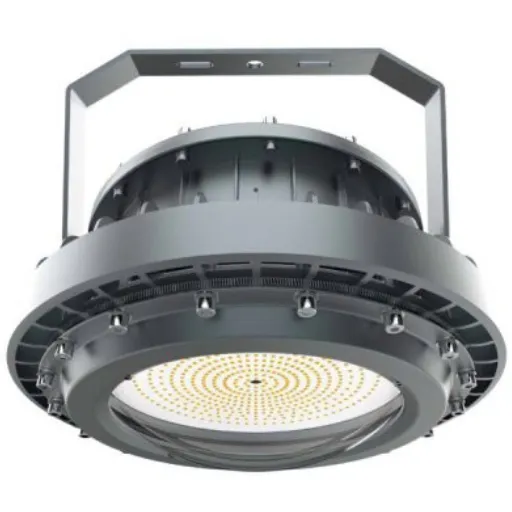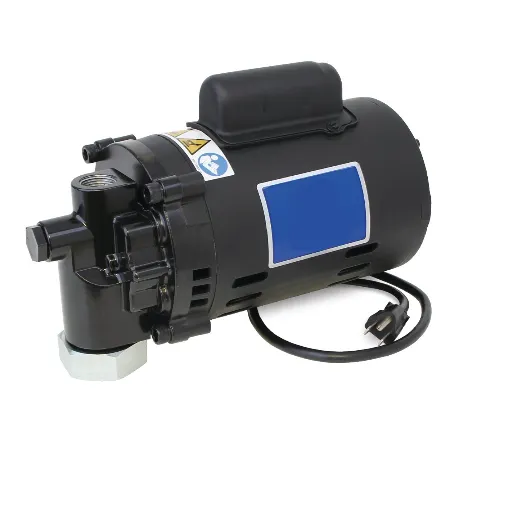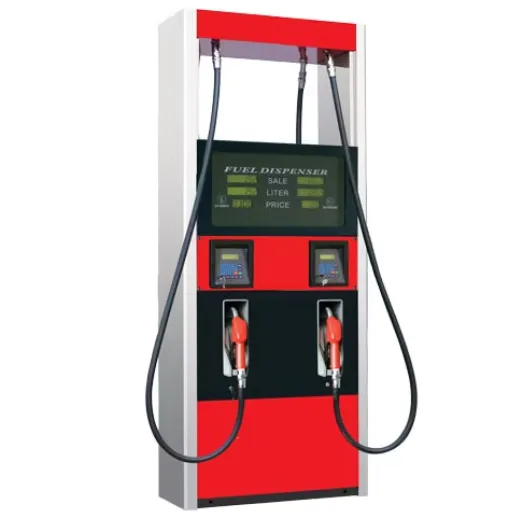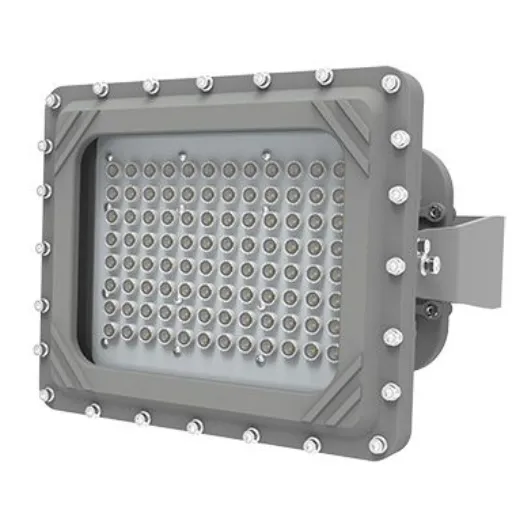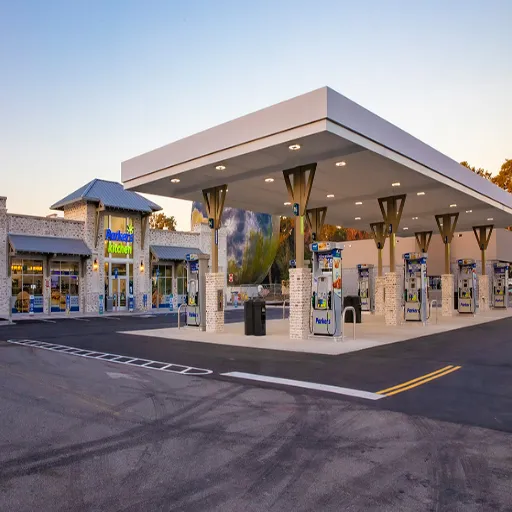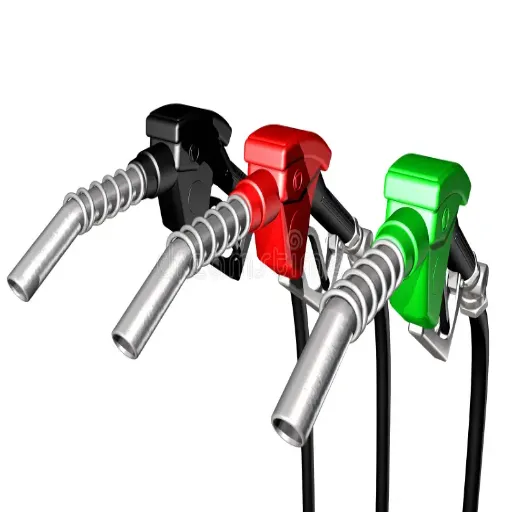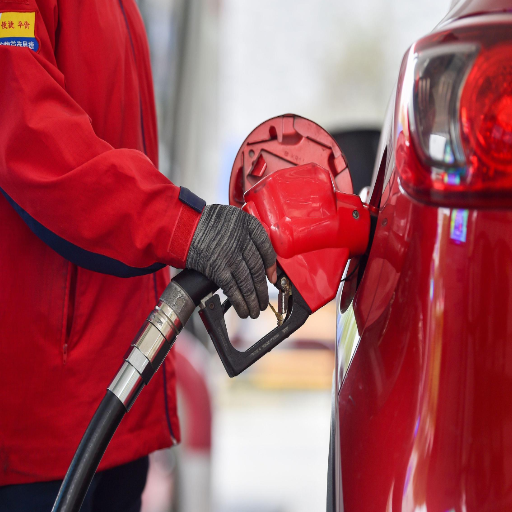At first glance, it may be hard to realize what makes a fuel pump and a fuel dispenser different and how these units are helpful in the overall fueling process. Whether you are a gasoline station owner running the business or a driver, chances are high that understanding how these devices function about one another is quite rewarding when it comes to fueling up cars. This post has some necessary information about the fuel pump vs. fuel dispenser points of view. I have further explained their responsibilities, issues, and how these two contribute to the global fuel distribution system. Before it is over, you will know why it is quite erroneous to consider a fuel pump and a fuel dispenser the same thing, even if most people ordinarily regard them as such.
What is a Fuel Pump?

A device such as a fuel pump is responsible for moving fuel from wherever it is stored to the engine of an automobile for use. This is important as it guarantees that fuel reaches the engine in a regulated and even flow, all while keeping the pressures the engine requires for optimum performance. Contrary to outdated models that might have their fuel pumps on the outside, in recent models, one can find the fuel pumps in the fuel tank. They are essential; without them, running the vehicle would be challenging. Insufficient fuel or fuel that is not evenly flowing can cause the engine to fail.
How does a fuel pump work?
A fuel pump is a mechanical device designed to pull fuel from the storage tank and supply a particular pressure to the engine for burning. Nowadays, with the predominant use of modern fuel pumps, which are most often electrical, a small motor creates a suction head for drawing fuel through a filter for cleaning. The fuel obtained is then forwarded through the fuel lines to the engine in pressurized conditions. In cases where the system is made of fuel injectors, the most essential part of the pump is the creation and maintenance of a high pressure needed for atomization due to the adequate mixing of hydrogen and oxygen necessary for complete combustion of the fuel.
Fuel pumps come in two categories, mechanical and electrical, which are popularly used in transport today. The former, found in most old carbureted vehicles, has a flexible member attached to a power-generating tool used to pump gas. Diesel pumps, on the other hand, require external petrol lift pumps, which are not only in the engines but also in the fuel tanks. However, they have become the most effective diesel fuel pumps. The electrical ones, which are submerged in the fuel tank, are instantly more microscopic and structurally more logical and precise, due to their inaccessibility to the vehicle’s electrical control unit.
As for electro fuel elements, the latest models can generate up to 40-60 pounds per square inch (psi), mainly in car gas injectors. This applies to stable gas compression in the engine, leading to the economic use of gas and the amount of gas output into the environment. But this cannot happen without innovative solutions, such as backup pumps for brief non-power operation and an advanced fuel control system in place of fixed magnets.
Types of fuel pumps used in vehicles
The fuel pump is the heart of a car’s delivery system, moving gasoline from the tank to the engine. Without it, combustion simply cannot take place. Because different engines have varying demands, several pump designs have appeared over the years.
Mechanical Pumps: Mechanical pumps still linger in vintage cars and farm trucks. Powered by a simple rocker arm or cam, they crank out 4 to 10 psi. That pressure level feeds a carburetor quite nicely but struggles by any modern benchmark.
Electric Pumps: Electric pumps, by sharp contrast, dominate contemporary fuel systems. Most generate between 40 and 60 psi and can reach higher figures if the control module permits. Many sit inside the tank, shielded from road grit. Variable-speed motors adjust flow on the fly, squeezing out extra mileage when throttle input eases. Pressure regulators and sensors ride along to keep delivery steady, no matter what the driver does.
Inline Fuel Pumps: An inline fuel pump lives outside the tank and sits along the feed line. Tuners and series car builders prize the gadget for its appetite, which hurls pressure and volume into modified powerplants. Racing, where lag means the end of your lap, pulls the trigger first.
Rotary Vane Fuel Pumps: Rotary-vane designs are built to withstand grit, heat, and all-day throttle. Fleet trucks and off-highway gear lean on them because the pumps stay honest after seasons of punishment. Diesel, alcohol, or premium—the vanes shrug off the fuel-grade question.
Turbine Fuel Pumps: A turbine pump glides through the circuit with a hush that surprises new owners. Edge-mounted impellers scoop, spin, and settle pressure on almost every sedan built since Reagan. Thanks to its quiet pedigree, carmakers bolt the setup under nearly any backseat mat.
Gerotor Fuel Pumps: The gerotor hides a star-shaped rotor inside a matching ring that rolls fuel forward with every tooth. Thanks to that compact dance, high-end injection systems fit the pump without jamming the bay. Racing crews, street tuners, and engineers chasing quick rise times claim it with equal enthusiasm.
Automobile engineers match a specific fuel pump to a car’s fuel system layout and engine architecture, and outline performance targets. Continued research has pushed contemporary pumps toward higher efficiency, added layers of reliability, and a growing capacity to handle alternative fuels such as biofuel blends or hydrogen mixtures.
Benefits of electric fuel pumps
Electric crux, so there is a vast variety of vehicles that CVFPs would consider appropriate. For one, a higher edge increases the mean better fuel economy, as opposed to a defined edge, with such pumps providing the needed maximum amount of fuel while assisting in controlling combustion and consumption. Also, there is better fuel delivery to the engine with electric fuel pumps, such that the fuel flow of the motor is always at optimal values even in adverse situations.
All these aspects make electric fuel pumps very accommodating to the advanced internal combustion engine technologies. That stands in contrast to the turbochargers. Technoemic electric fuel pumps can provide a main cylindrical conduit that carries fuel at higher than normal pressure beyond the engine block, which is necessary for high-speed Fuel injection. For example, electric fuel pumps can achieve a pressure well above 40 psi to cope with direct injection engines and perform all required tasks properly.
It is also mentioned in electronic fuel pump systems that the safety limits are maintained. That is, when there is an emergency, the CHP is instructed to stop feeding fuel to the engine. These features support new-generation fuels against global warming trends by encouraging product adoption. One sustains fuels like biofuels or hydrogen fueling, which many suggest as the way forward in automotive options. They can be updated to suit the modern energy trends, which steel wire hose in this case makes them very radical for the motor industry.
Exploring Fuel Dispensers

Fuel dispensers pump liquid fuels, namely petroleum, diesel, or their biodegradable variants, into moving vehicles. These gadgets are typically installed in gas stations and are responsible for measuring and delivering fuel effectively and safely. In many cases, modern-day fuel dispensers are equipped with neat devices displaying their prices and even mileage counting devices designed for fuel purchases. Nonetheless, new models are raising the bar. They can equally accommodate the dispenser in managing a wide range of fuels, including those from self-renewable and other alternative sources, for the apparent reasons of today’s dynamic energy requirements.
What is a fuel dispenser used for?
A fuel dispenser enables the transfer of liquid fuels like petrol, diesel, biofuels, or others, such as hydrogen, from storage in the fuel tank of any motor vehicle. At the filling station, cars, trucks, motorcycles, and other machinery operating on internal combustion engines or implementing a different propelling engine technology are all refueled and serviced through this dispensing equipment. Up-to-date dispensing equipment comes with superior features, which ensure proper measurement for less fuel consumption and thus waste reduction, as well as maintaining higher fuel integrity.
Moreover, this era has seen a surge towards the environmentally friendly campaign, resulting in more comprehensive dispensers that accommodate other types of fuels, including compressed natural gas (CNG) and electric vehicle charging in hybrid systems. The latest research findings state that there is a concentric expansion in the world’s fuel dispenser markets and that in some parts, fuel dispensers are expected to manifest a CAGR of 5% between 2022 and 2030. Let’s realize that the need for low emissions highly drives these specifications, and indeed, low-emission fuels are currently the order of the day. Moreover, the innovative fuel dispensers, which include IoT systems, offer features that display fuel consumption in real time, increase operational efficiency, and protect the environment. Their adaptability sheds light on their importance in the new energy order.
Components of a fuel dispenser pump
A conventional fuel pump blends several mechanical and electronic networks to deliver gasoline or diesel with uncommon precision. Hydraulics supplies the heaviest lifting, combining a motor, several pumps, and a handful of clattering valves that suck liquid from an underground reservoir and shove it toward the nozzle; the electric motor is usually inner-gated for smooth starts and dead-stops.
Metering sits higher in the command chain, employing rotary or electromagnetic flow sensors logged to a microcontroller. Those rotating numbers feed an onboard calibration routine that spits an unshakeable volume reading to the cash register.
The nozzle itself is simple but essential. A poppet valve governs the gush, while ergonomic holds let users aim the stream without cramping. Connected rubber hoses keep pressure even as the distance between the pump and the tank yawns.
Control electronics, tucked near the dispenser’s bottom, manage price tags, memory logs, and two-way chatter with point-of-sale terminals.
An alphanumeric display, often lit with gaudy LEDs, marries running totals to fuel grade and warns drivers when a lingered fill-up has priced their next coffee.
Finally, a vapor recovery loop clasps the nozzle spout, drags escaping fumes through charcoal, and returns them to the pump body, nipping at light-hydrocarbon releases before they taste open air.
Contemporary fuel dispensers marry precision electronics, robust pumps, and smart fluid-control valves into a system that delivers gasoline smoothly and with a reduced carbon footprint. The setup embodies recent engineering breakthroughs, boosting reliability while trimming the environmental toll of ordinary refueling stops.
How does a dispenser use a submersible pump?
An underground fuel storage station uses a submersible fuel pump for effective fuel transport, eliminating the need for a fuel pump. This is designed for submerged use in the tank for high performance and reliability. Submersible pumps are also used because the fuel is pushed through rather than pulled, as is usually the case with other pumps. This reduces pressure drops and assures a steady fuel flow even for long distances.
This becomes even more useful, especially in busy fuelling stations where a submersible pump can pump up to 40 gallons of fuel or more a minute, ensuring that lingering cars are well-refueled immediately. They figured out how to make these pumps store fuel in such a way that reduces aeration and doesn’t allow fuel to evaporate during delivery. Moreover, these are the more advanced submersible pumps with sophisticated safety measures, including relief valves that come into play in case of pressure escalation.
Using submersible pumps in such applications offers other benefits, such as reducing energy consumption. Such progress in submersible pumps has resulted in adopting low electricity consumption motors that are no less effective. Furthermore, repair and maintenance operations are less time-consuming, predominantly due to the replacement option for the motors and pump units. Such operational speed, reliability, and energy-saving measures indicate that submersible pumps form a core part of today’s refuel distribution systems.
Comparing Petrol Pumps and Gas Pumps
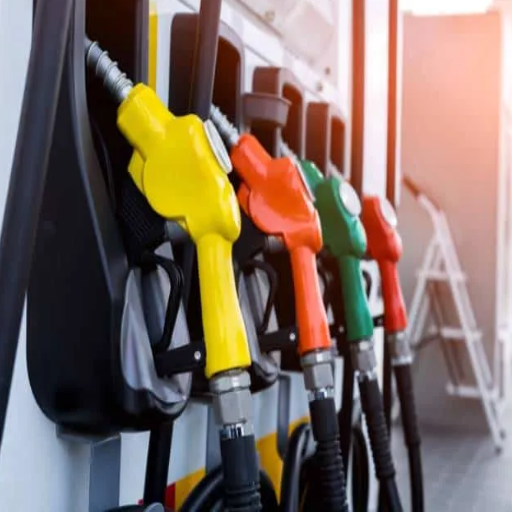
Petrol pumps and gas pumps work the same way, which is why many people sometimes confuse them, but they fundamentally differ in the kind of fuel they hold for dispensing. Gasoline or “petrol” pumps are designed to pump and distribute gasoline or petrol for vehicles powered by internal combustion engines. Whence names as gas pumps are the ones that are commonly used for an abundant supply of alternative fuels like Liquid Petroleum Gas (LPG) and Compressed Natural Gas (CNG).
Although petrol pumps are commonly found in existing fuel stations, gas pumps are not necessarily installed there; their use extends to the newer automobile fuel stations in the market, which provide cleaner fuels to their clients. Also, both types of pumps are designed to serve the same purpose, even as maintenance is carried out and safety refueling is prioritized. Nevertheless, gas pumps require a particular arrangement that considers the fuel they should deliver.
Differences between petrol pumps and gas pumps
A petrol and gas pump performs separate roles dictated mainly by the fuel stored within its tanks. The typical petrol dispenser releases gasoline or diesel from underground reservoirs, liquids that, while still flammable, can be handled with relatively straightforward infrastructure. Transport and storage logistics benefit from the fuels remaining in a liquid state until the moment they enter a vehicle’s tank.
Instead, a gas pump caters to compressed natural gas (CNG) or liquefied petroleum gas (LPG). Both gaseous fuels demand heavy-duty steel cylinders that can withstand enormous pressure, and that necessity complicates piping, metering, and servicing arrangements. Cost estimates for those added components usually exceed the budget for a conventional petrol-site overhaul.
Environmental comparisons also weigh heavily in the debate over fuel choice. Gasoline and diesel engines still account for a large share of urban smog and greenhouse gas warming, even after adopting multiple exhaust-cleaning technologies. By contrast, cars running on CNG can shave 20 to 30 percent off the lifecycle carbon output of comparably sized diesel vehicles, according to several peer-reviewed emissions studies. That advantage has quietly nudged policy-makers toward subsidizing gas-pump deployments as part of longer-term decarbonization strategies for road transport.
Petrol pump nozzles push a liquid so thick and heavy that gravity seems to help them along. Gasoline usually arrives in two or three minutes, making a stop feel almost casual. Compressing a gas, on the other hand, takes time; high-pressure hoses, cool-down valves, and leak sensors keep it safe while delaying the driver. That slower ritual gauge ticking and screens flashing green are already part of many city routines.
Globally, the footprint of CNG and hydrogen nozzles is expanding. India, for instance, logged its 5,000th CNG station in early 2023, routing fuel to rickshaws and city buses. The spread is echoed in places from Buenos Aires to Beijing, though petrol islands remain the default stop for most motorists. Pumps that dispense diesel, LNG, or biofuels trail behind, still hemmed in by regulatory red tape and uncertain demand.
Together, these trends sketch a portrait of a marketplace slowly reorienting itself. Governments dangle incentives, fleets run spreadsheets on lifetime emissions, and ordinary drivers scan labels for octane or kilowatt-hours, depending on the day. The conventional fill-up is far from obsolete, yet the road ahead feels increasingly drawn in high pressure, almost like the hoses that feed the newest pumps.
Understanding the fuel flow mechanism
The fuel-delivery apparatus in contemporary automobiles displays complexity and surprising efficiency, securing maximum energy use from each precise pulse of gasoline or diesel. In a classic reciprocating setup, an electric or mechanical pump hauls liquid from the tank, shoving it down metal lines and past gauges until it clears the firewall and reaches the block. A thrown-away filter strips dirt and rust, sparing the intake valves and injectors the grief of a messy salad. With a spark, or under diesel pressure, that prepped mist explodes inside the chamber, turning stored chemistry into wrenching torque.
Newer injection strategies have leapfrogged the age-old carburetor, trimming waste and cleaning the tailpipe workhorse by workhorse. Direct-injection setups fire metered drops straight into a hot cylinder, half atomized and half liquid, sewing fuel delivery into the combustion rhythm. Common-rail diesel rigs crank that precise rail pressure sky-high and hold it steady, letting freight-haulers breathe freely, whether idle or sprinting up a grade.
Electric-vehicle (EV) charging setups have quickly become central to the broader push away from fossil-fueled transport. Power flows from a public station into the car’s battery bank and lights its range gauge almost instantly. At a Level 3 kiosk, that process can knock 30 to 80 minutes off the clock, bringing the battery up to roughly 80 percent with no noticeable read-about-it delay. By late 2023, a map dotted with such charger spaces, well beyond tourism, over a million points, when China alone passed the 1.8 million mark.
Liquid-gas pump technology is ever-changing, mirroring the rise of batteries in the same town. Operators keep refining after cleaner combustion and e-boost steps, repeatedly polishing thermal nozzles and tweaking cryo-cooling curves. Restless tinkering leads the industry toward the outcomes the planet desperately requires.
The role of the nozzle fuel in dispensing
The fuel nozzle is far from ordinary; it is the final guardian of each fill-up. Attached sensors and a quick-cut shut-off valve stop the pump when the tank reaches its brim, averting costly drips that might otherwise stain pavement or seep into delicate aquifers. That small act keeps both cash and contaminants out of the landscape.
Hydrogen buses and CNG trucks demand nozzles tuned to their pressures and chemistry. Manufacturers now bolt on ratcheting locks and real-time temperature gauges so a worker can connect a 10,000-psi hose without second-guessing the seal.
Engineers track the difference. Clever venturi designs, paired with more hermetic bayonet seals, shave vapor losses at the lip of the spout by almost a fifth. Even ergonomics matter; molded grips that fit an all-day shift hand hold tough as porcelain yet feel like rubber on the palm. Such refinements let small-town stations stay open late without torching their margin on spilled gasoline.
The gradual move from gasoline to electric, hydrogen, and bio-based fuels has prompted engineers to redesign fueling nozzles to work with every new energy source. Those modifications remind industry experts that the nozzle is often the unsung hero, making a low-emission fuel economy feel ordinary.
How to Choose the Right Pump or Dispenser for Your Needs
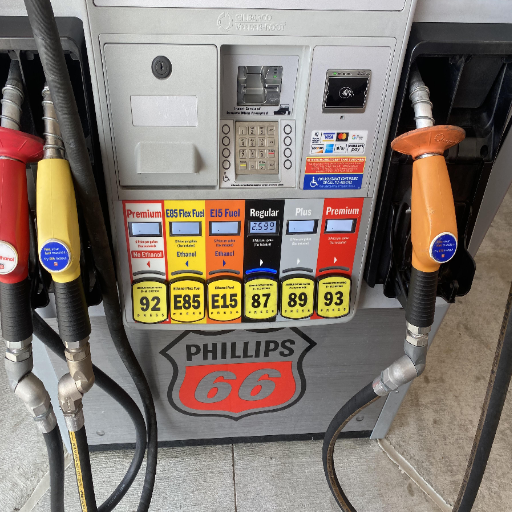
There are some critical considerations when selecting the most appropriate pump or dispenser. Specifically, the first step is to identify the fuel that will be dispensed: gasoline, diesel, biofuel, hydrogen, and electricity. Check the equipment’s capability regarding the fuel it feeds and the standards that govern it. Find out how many customers will visit your facility over a specific period; a high-volume station will require stronger systems. Moreover, do not forget to think about the simplicity of operations, the likelihood of additional costs for maintenance, and the technologies widely used, such as the inclusion of digital screens for monitoring or payment systems. This way, the best machine and one perfectly suitable for one’s activities can be chosen.
Factors to consider when buying a fuel pump
Compatibility with Fuel Types: Each fuel blend behaves differently inside a pump housing. E85, for instance, attracts only those pumps explicitly rated for high-ethanol use because the chemical mix can quickly corrode unprotected components. Matching the pumps’ chemistry to the dispensary’s fuel stream is not a choice but a safeguard against leaks and costly repairs.
Flow Rate and Capacity: Flow rate, measured in gallons or liters per minute, directly shapes customer experience. A nozzle’s 10-GPM output lets busy stations move fuel quickly and keeps lines from forming at rush hour; a 5-to-6-GPM model is usually enough for rural sites with steady but modest demand. Choosing the right capacity up front prevents frustrating delays and keeps motorists satisfied.
Durability and Weather Resistance: Pumps built from stainless steel or specially coated alloys laugh at rain, road salt, and freezing temperatures. This weather-proofing cuts maintenance calls and lets the equipment outlast its warranty with room to spare. Toughness is the only sensible design philosophy in regions where the forecast swings wildly.
Modern Features and Technology: Today’s fuel dispensers boast electronic control modules, backlit displays that show exactly how much fuel is flowing, and contactless payment pads that accept tap-and-go cards. Many terminals now run EMV-compliant software, so customer transactions are encrypted on the spot. A handful of pumps even bundle real-time inventory sensors that push numbers to the back office, saving the clerk a walk to the tank farm.
Energy Efficiency: Electricity bills add up, especially at high-volume sites, so an energy-smart pump that sips power during the night can make a noticeable difference. The longer it runs on less current, the smaller the carbon footprint. Check for ENERGY STAR stickers or regional equivalents to verify the savings are more than marketing talk.
Ease of Maintenance: Maintenance crews appreciate dispensers built with swing-out panels, self-diagnosis readouts, and plug-in replacement modules. When the meter freezes on New Year’s, on St. Day, shortcuts like these let a technician swap a board in 20 minutes instead of waiting for a specialist. Less downtime means more customer cars in the lane.
Regulatory Compliance: No operator wants a surprise compliance audit, so pumps must meet local ASTM specs and stricter environmental rules on emissions or spill containment. Equipment that skips this homework can lead to costly fines, not to mention bad press. Checking the model’s certification letters up front is faster than fighting a citation later.
Cost and Warranty: Price tags vary, but the savvy buyer looks at total lifetime cost: installation, repairs, insurance, and power. A robust warranty, typically three to five years, puts muscle behind the manufacturer’s promise, so the owner isn’t left holding the bill after an early failure. Spreading the purchase price over its expected service life often reveals the difference between cheap and economical.
Balancing cost, workflow capacity, and warranty coverage will guide you toward a fuel pump that satisfies day-to-day needs, keeps clients content, and remains dependable over the years.
Why modern fuel dispensers are preferred
Modern fuel pumps are always ahead of existing fueling equipment on the market. The improvement will address any shortcomings concerning the current technology and enhance the convenience offered to customers. For instance, the payment issue at the pump service is for the current mileage; one may not go to the petrol station office and pay. Station owners are freer than ever as cutting-edge machines have everything- high-accuracy flow meters, exact money, electronic dispensing systems (less waste through incorrect fixes) that will not take up extra space. Many recent units are engineered with the Web of Objects capabilities, which facilitate monitoring from a distance, diagnosing in real time, and doing predictive maintenance, enhancing machine efficiencies without adding cost.
Studies have shown that, when correct fueling techniques are coupled with pumps with cutting-edge technology improvements in fueling accuracy, up to 99.5% of conventional records have been reported. This combination will help reduce fuel theft problems when dispensing and, most importantly, improve profitability for fuel station owners. In addition, more efficient designs in the past have often been included in the latest designs along with components that incorporate enhanced vapor recovery. These components provide eco-sensitive treatments in tandem with regulations and control of harmful gas emissions. The best part about these cutting-edge systems is that in addition to the functions above, they are extended further in making the customers’ operations easier, for example, through screen touching interaction, QR codes, and contactless transactions, as well as quicker refueling times, thus providing a higher level of satisfaction and comfort.
Introducing modern fuel dispensers within fuel stations can be considered a beneficial and far-sighted decision. Adhering to ecological and techno-economic standards will help these structures stay ahead of contemporary business trends, progress the operating process, and satisfy all customers’ requirements and desires equally.
Maintenance tips for fuel dispenser pumps
Routine upkeep of fuel-dispenser pumps guards against premature failure while preserving overall safety and efficiency. Industry veterans agree that diligence at this stage pays dividends in uptime and confidence at the nozzle.
Visible wear, rust, or seepage around a dispenser can worsen quickly if ignored, so a quick walk-around should be part of every shift change. Some paper towels and light solvents remove road grime from nozzles, hoses, and inline strainers that otherwise distort flow rates.
Most jurisdictions require an official calibration once or twice a year, yet informal checks every month avoid surprise short-charges to regular customers. Out-of-spec meters hurt both revenue and that fragile thing called customer trust.
Touchscreens, proximity sensors, and the underlying embedded-code stacks form the electronic backbone of modern dispensers. Chip glitches, lagging displays, and forgotten firmware updates can cripple operations before anyone notices, so routine diagnostics are no longer optional.
Replace Worn Components: A simple gasket, seal, or O-ring that has seen better days can quietly start leaking. Swapping such parts during routine maintenance eliminates the risk before it shows up. Nozzles and hoses should also be changed according to the manufacturer’s schedule or sooner if a technician spots a tear.
Check Fuel Filters Frequently: Dirty fuel filters act like coffee grounds in a morning brew, slowing everything down. Inspect them often, especially in locations where the fuel supply looks suspect. Clean cartridges keep pumps happy and deliver reliable fuel quality to end users.
Test Safety Features: Emergency shut-off valves are the brakes nobody notices until needed. Monthly checks of these mechanisms can differentiate between a near miss and an accident. A printed checklist makes the task straightforward and difficult to forget.
Preventative Maintenance Scheduling: A preventative maintenance plan blends daily greasing, weekly inspections, and quarterly overhauls into one rhythm. Finding minor issues early almost always beats paying for a significant repair. Many crews now enter the completed tasks into an app, so the history trail is clean and verifiable.
Monitor for Environmental Compliance: Vapor-recovery hardware and similar emission controls need more than good intentions; they need numbers. Regular testing confirms that the equipment is breathing clean, avoiding fines and shutdown orders. Checking compliance may be routine, but the cost of ignoring it can be harsh.
Routine calibrations, leak checks, and visual inspections can keep a fuel dispenser pump in fighting shape long beyond its projected service life and save the site a lot of money in avoidable repairs. Customers notice smooth starts and steady flows, so day-to-day upkeep quietly boosts their satisfaction. Finally, staying disciplined about daily tasks helps the station meet environmental rules and industry best practice guidance without making paperwork a burden.
Common Issues with Fuel Pumps and Dispensers
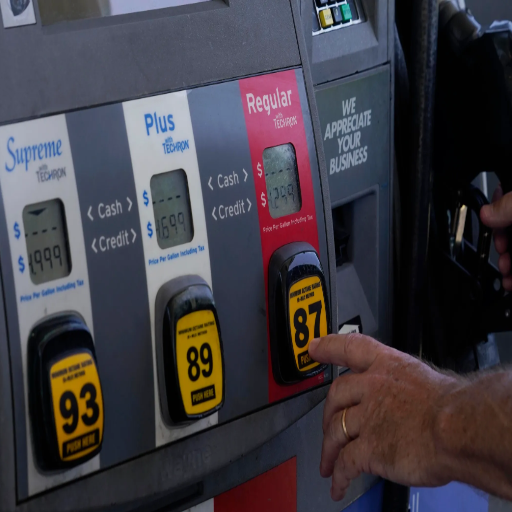
Fuel-nozzle leaks occur more often than most operators would like to admit. Even a few drips can translate into lost money and an outright fire hazard on a bad day. A disciplined inspection schedule paired with the swift swapping of any cracked gaskets or sleeves stops the problem before it gains traction.
Flow-rate headaches usually involve filters that have become tea-sieved foam, pumps that hum but do nothing, or lines pinched tighter than a mechanic’s grip. A simple cleaning—or, if pride permits it, replacing—of the offending bits quickly restores expected delivery.
Dashboard displays can act like moody phones, freezing mid-read or offering nonsense digits that leave patrons scratching their heads. Swapping out the cracked glass and, when needed, calming the software with a reboot or recalibration restores clarity on the screen.
Credit-card terminals occasionally stage a silent revolt, blinking `read error` just when the line has no patience left. Dusting internal optics, checking coax runs, and nudging the firmware keeps the little chip nooks honest and responsive.
Air or vapor has a talent for sneaking into the fuel path at the worst possible instant, turning a steady hiss into an embarrassing wheeze. Periodic bleeding of the rail and vigilant upkeep of vapor-recovery hardware banish the bubbles.
When these ailments are dealt with at first sight rather than after a cascade of complaints, the station runs smoothly and customers return. In the end, trust is the cleanest fuel any operator can pump.
Signs of a failing fuel pump
A compromised fuel pump typically announces its distress through a short list of unmistakable symptoms.
Engine Sputtering: Driving at highway speed, the motor may suddenly sputter, its rhythm broken by irregular bursts of fuel.
Loss of Power Under Stress: The vehicle feels sluggish when accelerating, especially on inclines or while loaded; that heavy sensation often points back to the pump.
Difficulty Starting the Vehicle: The morning starts to drag out, and the starter grinds longer than normal because the pump cannot build pressure quickly enough.
Engine Stalling: The engine then dies unexpectedly at a red light, proof that the fuel supply has quit, even if the battery and ignition are fine.
Unusual Noise from the Fuel Tank: Bend your ear toward the tank, and you may hear a whining or grating whine, an industrial soundtrack that pumps out desperation.
Decreased Fuel Efficiency: Mileage numbers slip, demanding more fuel per mile as the pump tries and fails to match the engine’s appetite.
Ignoring the pattern lets damage spread; a swift inspection of the fuel system keeps repair bills manageable and the car dependable.
How to troubleshoot a faulty fuel dispenser
To troubleshoot when the fuel pump is not working correctly, I will take the necessary precautions, and among the things I will check for are if there is any visible damage, leaks, or if the nozzle is clogged, and ensure that the hose and the connections are also unclogged. I will then ensure that the roots and dispensers (self-service gasoline pumps) are working well and that a satisfactory amount of fuel is being dispensed. After filtration, I will further eliminate bacteria or dirt by checking the pipes and valves. There may also be a problem with the calibration of the petrol pump, and performing a series of calibration tests can help establish if that is the case. In the case of more difficult tasks, the maintenance guidelines for that kind of equipment would help refer to or seek the assistance of a specialist in the field of operation.
Preventive measures for accurate fuel dispensing
One must engage in tank maintenance exercises and take a more proactive approach to maintain accurate fuel discharge measurements. As a first step in this direction, the user is expected to provide ongoing examination and purification of filters to eliminate congestion caused by any flow restriction. Meanwhile, the distribution counter should be adjusted at certain time intervals to reauthorise for accuracy, along with relevant legal requirements. Inspect hoses, nozzles, and valves to ascertain whether they are in good condition and replace any part that looks worn out to avoid spills and breakdowns. The quality of the fuel that is being delivered should be observed to prevent contamination, which may be detrimental to the proper functioning of the fuel. Cars can also be scanned for software updates, and the manufacturer’s maintenance recommendations should be followed. These precautions are aimed at preventing outages and improving the efficiency of the equipment.
Reference Sources
Automatic Vehicle Fueling System using PLC Controlled
A Review Paper on Automated Fuel Pump Security System
Consumer Protection Related to Dispensing Pump Manipulation in SPBU (Gas Station)
Frequently Asked Questions (FAQs)
Q: What is the main difference between a fuel pump and a dispenser?
A: The primary difference lies in their functions and components. A fuel pump, particularly a submersible pump placed inside an underground storage tank, pulls fuel up from underground and pushes it to the surface. Meanwhile, a fuel dispenser uses components like a flow meter and a fuel nozzle to deliver fuel to vehicles.
Q: How does a submersible pump work in fuel management?
A: In fuel management, a submersible pump is placed inside the storage tank. The pump efficiently pushes fuel up to multiple dispensers, ensuring a steady fuel flow from underground storage tanks to the dispensing units.
Q: Why are fuel dispensers important at a service station?
A: Fuel dispensers are crucial at a service station as they allow accurate and efficient fuel delivery into vehicles. They are equipped with flow meter fuel nozzles to ensure precise measurement and dispensing of fuel, influencing overall operational efficiency and customer satisfaction.
Q: How do suction pumps differ from submersible pumps in fuel transfer?
A: Suction pumps pull fuel up from underground tanks using mechanical means, whereas submersible pumps are placed inside the storage tank and push fuel to the surface. Submersible pumps are generally more efficient, especially for larger service stations with higher fuel demands.
Q: What role does a petrol bowser play in the fuel industry?
A: A petrol bowser, or fuel dispenser, plays a vital role in the fuel industry by facilitating fuel transfer from underground storage tanks to vehicles. It ensures accurate delivery and measurement of fuel, which is essential for sales and inventory tracking.
Q: How does a comprehensive guide benefit someone buying fuel equipment?
A: A comprehensive guide provides valuable insights into the different types of fuel pumps and dispensers, their functions, and how they affect fuel management. It helps buyers make informed decisions based on specific needs and the dynamics of the fuel industry, including fuel prices and efficiency.
Q: What are the benefits of using a mechanical fuel pump at a service station?
A: Mechanical fuel pumps are often used when electricity is unavailable or when simplicity and reliability are prioritized. They ensure that fuel transfer continues efficiently, with minimal maintenance and operational costs, making them suitable for smaller or remote service stations.
Q: Why is understanding fuel prices important when considering fuel dispensers?
A: Understanding fuel prices is crucial when considering fuel dispensers because they affect service stations’ investment returns. The efficiency and accuracy of fuel dispensers can influence fuel pricing strategies and customer satisfaction, impacting overall profitability in the fuel industry.
Q: How does a fuel dispenser’s flow meter fuel nozzle work?
A: The flow meter fuel nozzle inside a fuel dispenser measures the volume of fuel being dispensed. It ensures accurate delivery and billing of fuel, playing an essential role in maintaining the integrity of fuel transactions at service stations.

